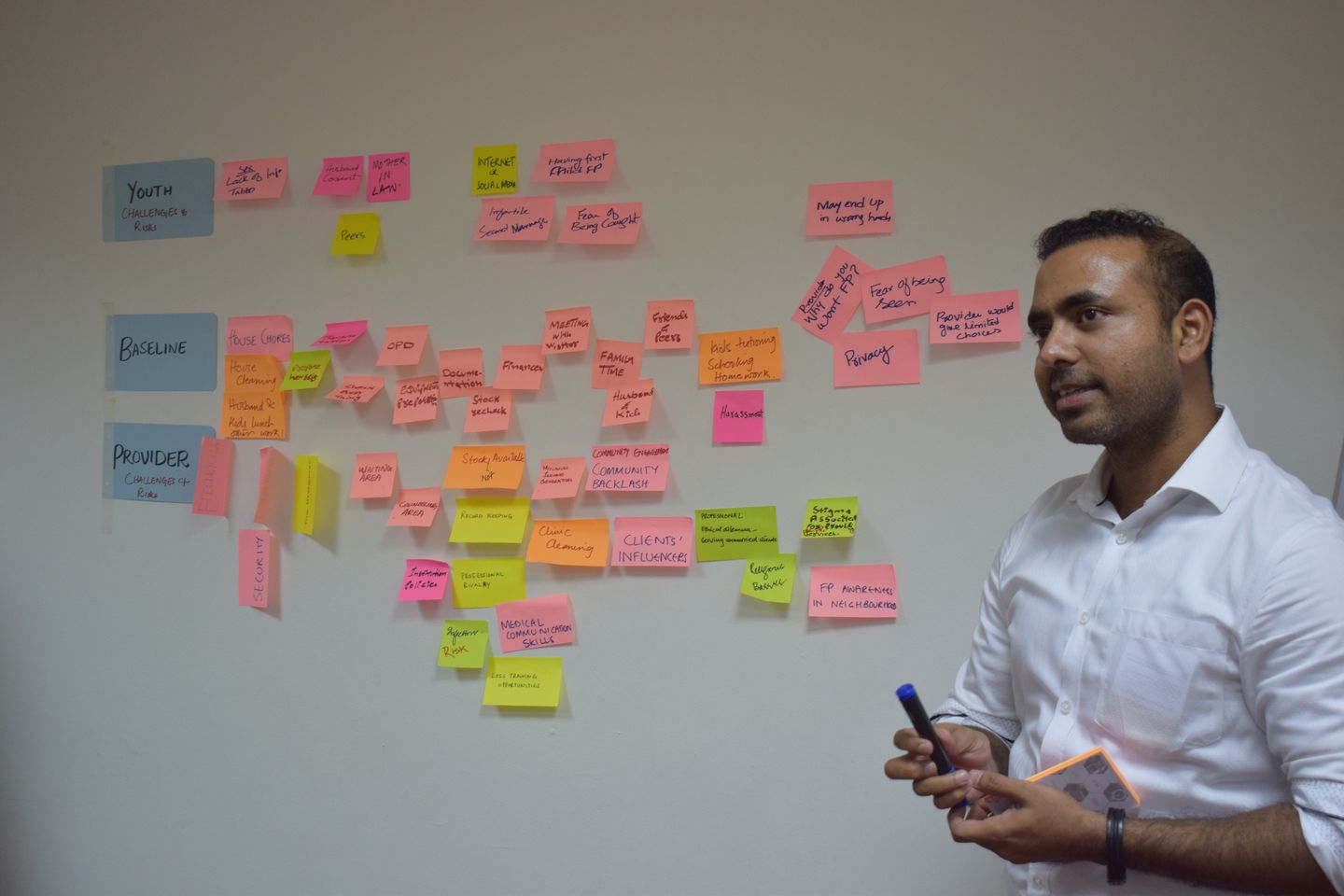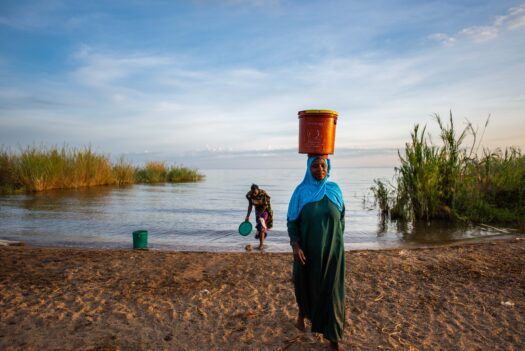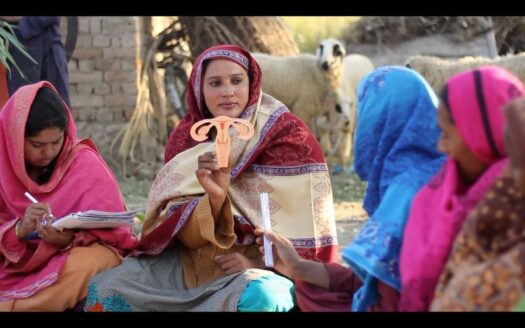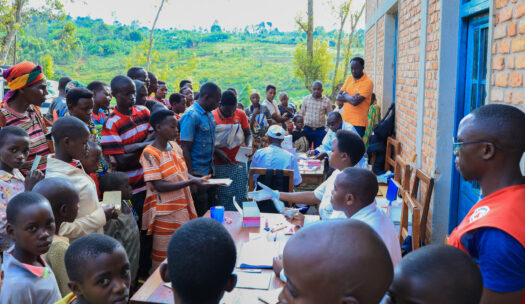Attend any international health conference today and ‘human-centered design’ is the newest buzzword. But, what exactly is human centered design? Aren’t our programs already centered on humans? Don’t we ensure their engagement in program design?
Yes…and no.
Building to Learn
Human centered design goes beyond traditional program design because it starts with improved understanding of the people you are designing for and ends with tailor made solutions that respond to their needs. Human centered design focuses on “building to learn.” That is, it rapidly generates and tests a range of ideas while encouraging us to “fail cheaply, learn quickly, and deepen empathy.” These ideas, or “rough prototypes” allow us to answer a small number of essential questions about a solution’s desirability and feasibility with minimal material and monetary investment.
In contrast, the usual approach is “learning to build.” We compile information (learn), then develop, pre-test, and implement (build) a solution. All too often, these solutions don’t achieve their intended effect. By putting people at the center of our process, human centered design can help us rapidly create and test a range of solutions that are responsive and relevant.
Around the world, adolescents and young people frequently report that they are afraid to seek sexual and reproductive health services, and that negative and judgmental provider attitudes significantly contribute to feelings of guilt and shame.
Numerous studies report that providers may ask “funny questions,” such as “did you tell your mother you are coming to seek family planning?” or “why are you wearing such a short skirt?”
Beyond Bias
This stubborn problem needs new perspective. Enter human centered design, which encourages exactly that. Through the Beyond Bias project, Pathfinder is partnering with YLabs and other to examine and address deeply held provider biases through human centered design.
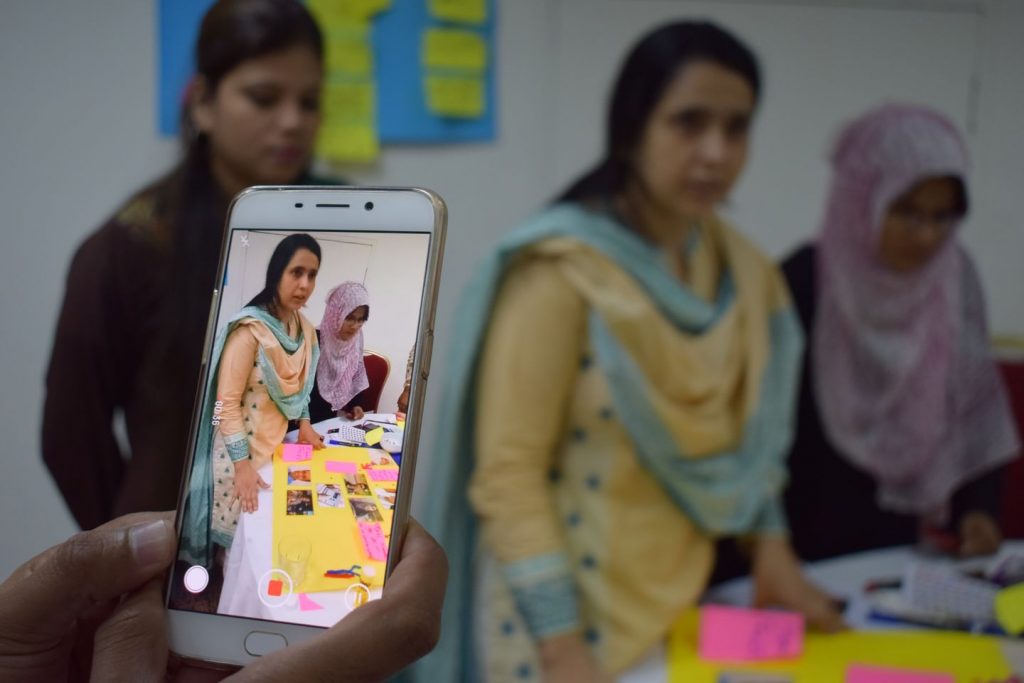
We began by gathering insights from the field about the reasons for provider bias and how it affects young people’s health choices and decisions. Project teams in Tanzania, Pakistan, Burkina Faso, and the United States used that information to generate solutions and develop rough prototypes for field testing. At a meeting we dubbed “IDEACON,” the Beyond Bias partners gathered to review the ideas—and to generate a few more for development into rough prototypes. Within a month we were back in Tanzania, prototypes in hand and ready to test them in clinics and communities.
What kind of prototypes did we develop?
How about some of these ideas…
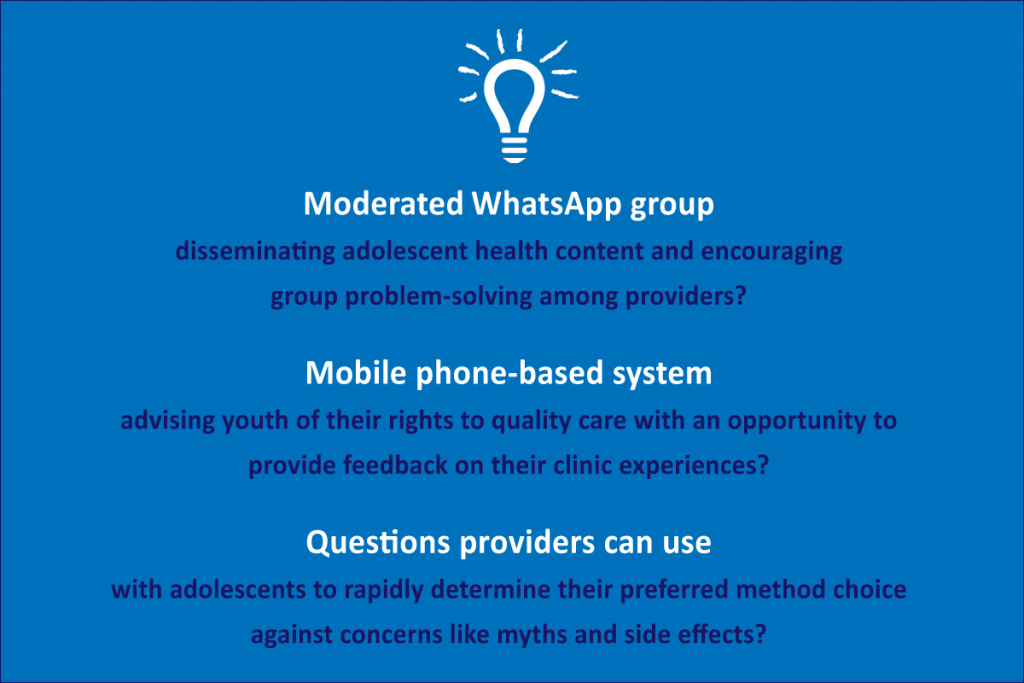
Provider participation in prototyping was quick to win converts. One nurse, a woman in her 40s, commented the activity made her think, “instead of expecting youth to change their behavior, the providers need to change their behavior first,” while another noted, “if you don’t meet youth in family planning, you meet them in labor.”
We will continue to test these prototypes in Pakistan and Burkina Faso, and we will use the feedback to rapidly modify (“iterate”) and improve the responsiveness of the prototypes. We are proud of the current prototypes, but experience tells us not to get too attached. By the end of the learning and iterating phases, the solution prototypes will likely look very different from the ones we started with in Tanzania.
Next steps with human centered design
This is really “business unusual!” It’s fun, interactive, and sometimes even a bit frustrating; human centered design is taking us out of our comfort zones. But we are committed. We know we can’t continue to rely on only on what we did in the past. Provider bias remains one of the many—and perhaps one of the most persistent—stumbling blocks to youth uptake of contraception, and we need bold new ideas to address it.
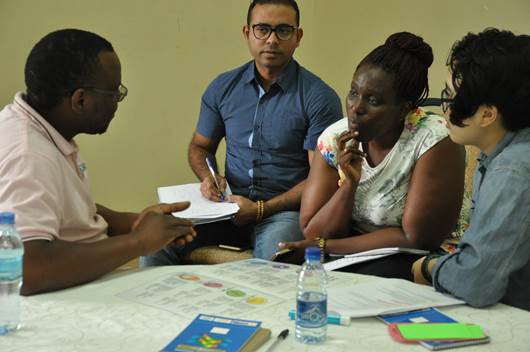
Beyond Bias increases contraceptive access and method choice for youth in the developing world. By bringing together providers and the young people they serve, Beyond Bias identifies scalable solutions that address provider bias and improve contraceptive counseling and services. Led by Pathfinder International, in collaboration with Camber Collective, YLabs, and CEGA, this three-year project is active in Pakistan, Tanzania, and Burkina Faso, with funding from the Bill & Melinda Gates Foundation.
